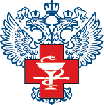 pirogov national medical surgical center
pirogov national medical surgical centernational center for researh and treatment of autoimmune diseases new jersey center for quality of life and health outcome research |
international symposium stem cell transplantation in multiple sclerosis: sharing the experience |
 |
 |
 |
 |
 |
 |
 |
 |
 |
 |
 |
 |
 |
 |
 |
| A Non-Myeloablative Stem Cell Transplantation Regimen for the Treatment of Multiple Sclerosis |
|
International Symposium "Stem Cell Transplantation in Multiple Sclerosis", Key-Note Lectures Book, 2009, p. 80-81 A. Barreira Recently two publications of our group indicated the efficacy of non-myeloablative Autologous stromal cell transplantation regimen for the treatment of relapsing remitting multiple sclerosis resistant to immunomodulator treatment1,2. Previous studies have shown that Autologous hematopoietic SCT (HSCT) using CY/rabbit ATG3 can be used as an intensive immunosuppressive therapy to treat refractory patients and to prevent the progression of multiple sclerosis (MS). The advantage of this non-myeloblative regimen compared with BEAM/horse ATG and is that the former was not associated with death and had 23% less severe complications. So the CY/rATG regimen seems to be associated with similar outcome results, but it presents less toxicity compared with the BEAM/hATG regimen. In our previous study we referred to 20 patients using the CY/rATG regimen. We now present the results of 30 patients treated with the non-myeloablative regimen after a longer follow-up. We studied 37 patients with median disease duration of 13 years, ranging from 5 to 30 years. The majority of the patients were aged range of 14 to 50 years. The secondary progressive multiple sclerosis (SPMS) predominated, followed by RRMS and PPMS. The follow-up time reached 2 years with a range from 6 months to 4 years. The number of relapses dropped significantly - from 27 in the year previous to transplantation to 6 after the procedure. No death occurred and the complications were minor. Sixteen patients had stabilization of the EDSS, ten patients got better, and 4 got worse. Our data has the following limitations: so far there is incomplete evaluation of the data; the follow up time was short; there was a trend to include patients with EDSS 6,0; and the majority of the cases were SPMS. We conclude that CY is active and safe for mobilization and can also be used on the conditioning regimen. Most of our MS patients achieved disease stabilization after one year of the procedure. *The components of the Brazilian group for HSCT in multiple sclerosis are the authors indicated in reference 2. REFERENCES 1) Burt RK, Loh Y., Cohen B., Stefoski D., Balabanov R., Katsamakis G., Oyama Y., Russell EJ, Stern J., Muraro P., Rose J., Testori A., Bucha J., Jovanovic B., Milanetti F., Storek J., Voltarelli JC, Burns WH. Autologous non-myeloablative haemopoietic stem cell transplantation in relapsingremitting multiple sclerosis: a phase I/II study. Lancet Neurol. 2009 Mar; 8(3):244-53. 2) Hamerschlak N., Rodrigues M., Moraes DA, Oliveira MC Stracieri ABPL, Pieroni F., Barros GMN, Madeira MIA, Simes BP, Barreira AA, Brum DG, Ribeiro AAF, Kutner JM, Tylberi, CP, Porto PP, Santana CL, Neto JZ, Barros JC, Paes AT, Burt RK, Oliveira EA, Mastropietro AP, Santos AC and Voltarelli JC. Brazilian experience with two conditioning regimens in patients with multiple sclerosis: BEAM/horse ATG and CY/rabbit ATG. Bone Marrow Transplantation 2009, 1-10 3) Burt RK, Cohen BA, Russell E., Spero K., Joshi A., Oyama Y., Karpus WJ, Luo K., Jovanovic B., Traynor A., Karlin K., Stefoski D., Burns WH. Hematopoietic stem cell transplantation for progressive multiple sclerosis: failure of a total body irradiation-based conditioning regimen to prevent disease progression in patients with high disability scores. Blood. 2003 Oct 1;102(7):2373-8. |
|
© KMart |
(last update) 28/10/2009 |